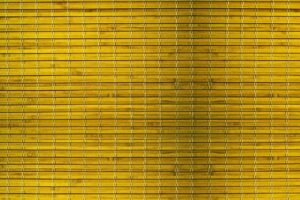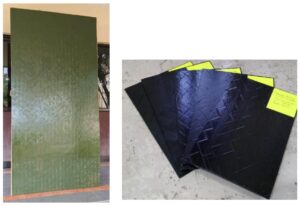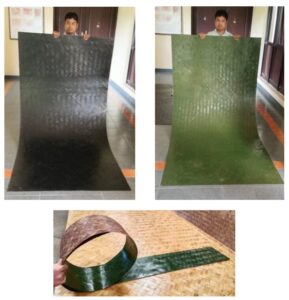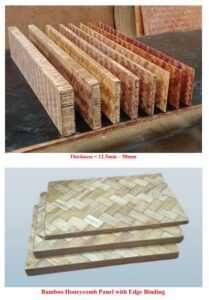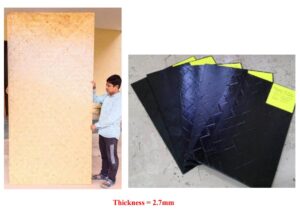As sustainable fashion gains momentum, bamboo clothing is emerging as a game-changer. This eco-friendly fabric offers a unique combination of comfort, skin benefits, and environmental sustainability. Whether you’re looking for breathable activewear, soft loungewear, or stylish yet responsible fashion choices, bamboo clothing provides a perfect solution. In this blog, we explore how bamboo fabric benefits both your skin and the planet, making it a top contender for the future of sustainable fashion.
1. The Rise of Sustainable Fashion
A) The Environmental Impact of Traditional Fabrics
Conventional fabrics like cotton and polyester require excessive water, chemicals, and energy during production.
The fashion industry is responsible for 10% of global carbon emissions and 20% of wastewater pollution.
B) Why Bamboo is a Sustainable Alternative
Bamboo grows rapidly, up to three feet per day, without pesticides or fertilizers.
It requires significantly less water compared to cotton.
Bamboo plantations absorb 35% more carbon dioxide than trees, helping combat climate change.
2. Skin Benefits of Bamboo Clothing
Bamboo fabric is not only environmentally friendly but also provides exceptional comfort and care for the skin.
A) Hypoallergenic and Gentle on Skin
Ideal for sensitive skin, as bamboo fabric is free from harsh chemicals and allergens.
Reduces irritation and allergic reactions, making it a great choice for those with eczema or other skin conditions.
B) Moisture-Wicking and Breathable
Bamboo fabric has excellent moisture-wicking properties, keeping your skin dry and fresh throughout the day.
It is three times more absorbent than cotton, preventing sweat buildup and discomfort.
C) Antibacterial and Odor-Resistant
Natural bamboo fibers contain antimicrobial properties, reducing bacteria growth and body odor.
Ideal for activewear, undergarments, and summer clothing.
D) Temperature-Regulating
Bamboo fabric keeps you cool in summer and warm in winter, making it perfect for all seasons.
Its thermo-regulating properties help maintain a comfortable body temperature without synthetic additives.
3. Environmental Benefits of Bamboo Clothing
A) Sustainable Growth and Production
Bamboo requires no pesticides, minimal water, and regenerates naturally after harvesting.
Unlike cotton, which depletes soil nutrients, bamboo enriches the soil and prevents erosion.
B) Biodegradable and Eco-Friendly
Bamboo fabric is 100% biodegradable, meaning it breaks down naturally without polluting the environment.
Unlike synthetic fabrics, it doesn’t release microplastics into water bodies during washing.
C) Energy-Efficient Manufacturing
Bamboo processing uses less energy compared to synthetic fabric production.
Advanced eco-friendly manufacturing techniques, such as closed-loop processing, further reduce waste and emissions.
4. Comparing Bamboo Clothing with Other Fabrics
| Feature | Bamboo Fabric | Cotton | Polyester |
|---|---|---|---|
| Sustainability | ✅ Eco-friendly, renewable | ❌ High water consumption | ❌ Non-biodegradable, fossil fuel-based |
| Breathability | ✅ Highly breathable | ✅ Breathable | ❌ Less breathable, traps heat |
| Moisture-wicking | ✅ Excellent | ❌ Absorbs but retains moisture | ✅ Good but synthetic |
| Skin-friendliness | ✅ Hypoallergenic, soft | ✅ Soft but may cause allergies | ❌ Can irritate skin |
| Biodegradability | ✅ 100% Biodegradable | ✅ Biodegradable | ❌ Non-biodegradable |
5. How to Care for Bamboo Clothing
To maintain the durability and softness of bamboo clothing:
Wash in cold water using mild, eco-friendly detergents.
Avoid fabric softeners, as bamboo fabric remains naturally soft.
Air dry when possible to reduce energy consumption and prolong fabric life.
Store in a cool, dry place to maintain its antibacterial properties.
6. The Future of Bamboo Fashion in India
With the growing demand for eco-conscious products, bamboo clothing is gaining popularity in India. More brands are investing in sustainable bamboo apparel, and consumers are making informed choices to support ethical fashion.
A) Government and Industry Support
Initiatives promoting sustainable textiles and eco-friendly manufacturing are encouraging the adoption of bamboo fabric.
Increased awareness about sustainable fashion trends is influencing purchasing decisions.
B) Expanding Market and Consumer Awareness
Indian consumers are becoming more conscious of the environmental and health impact of their clothing choices.
The rise of organic and sustainable fashion brands is making bamboo clothing more accessible and affordable.
7. Conclusion: A Smart Choice for You and the Planet
Bamboo clothing is a sustainable, skin-friendly, and eco-conscious choice that benefits both people and the planet. Its softness, breathability, and moisture-wicking properties make it ideal for everyday wear, while its low environmental impact supports a greener future.
By choosing bamboo fabric, you’re not just investing in comfort and style—you’re also contributing to a more sustainable world. Next time you shop for clothing, consider bamboo and take a step towards responsible fashion!

